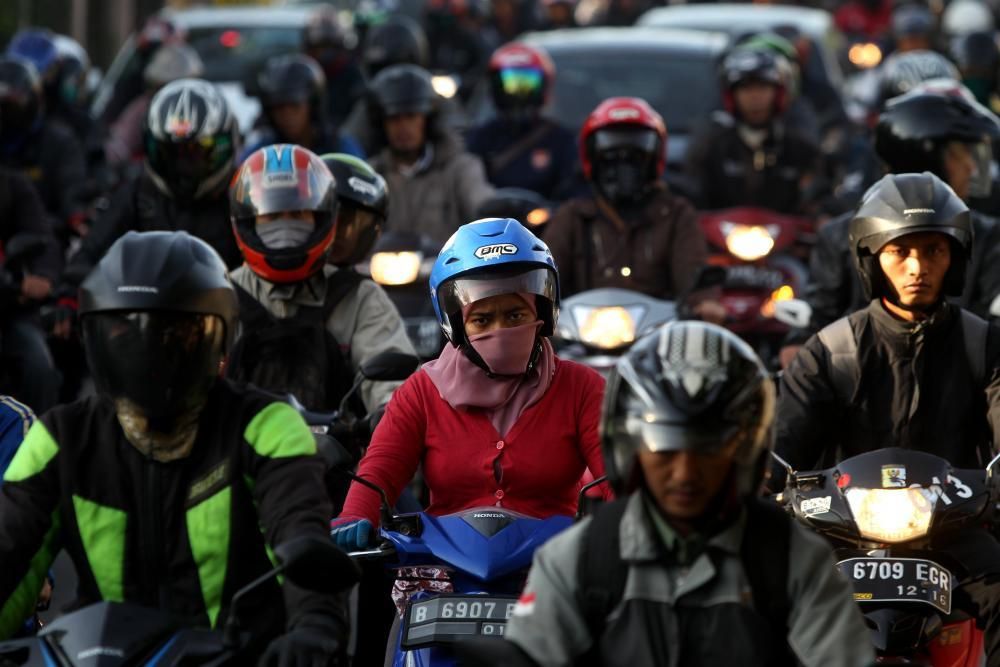Visit any Southeast Asian city and the scene is similar: Swarms of buzzing motorcycles dart in and out and around the semi-permanent gridlock of cars and trucks and buses. They pop up on sidewalks and zoom insanely down one-way streets in the wrong direction. In a region prone to sudden downpours, they form flash mobs beneath overpasses, blocking traffic on main thoroughfares until the rain passes. Stop signs and red lights are meaningless. Pedestrians get no respect.
Small, inexpensive motorcycles — motor bikes, motor scooters, motos, e-bikes; they go by many names — have taken over the roads of Southeast Asia and much of the developing world. People who used to walk or ride a bicycle now zip, dodge, and weave. For the masses, most of them living below the poverty line, it means they can commute to a better job, live in a better shantytown. Although designed to carry no more than one passenger, the motorcycle has quickly morphed into family transportation. Any Westerner who has traveled in Southeast Asia has probably chuckled (or blanched) at the sight of a family of five crowded onto a small motorcycle, dad driving and the youngest child — helmetless — perched on the handlebars.
About 95 million motorcycles will be manufactured this year, compared to 80 million cars. China’s growing middle class accounts for nearly a quarter of the global car market — a breathtaking number — but motorcycles and scooters are rolling off assembly lines and out of showrooms at an even faster rate, with some industry analysts predicting sales of up to 135 million units in 2016. Most of the new cars will end up in rich countries and, by and large, replacing existing vehicles. The vast majority of the motorcycles will be sold in the developing world, and a large percentage of them will be purchased by first-time owners.
But there is a downside to this boom: motorcycles are deadly. Over the next decade, crashes involving small motorcycles are on course to claim more lives in the developing world than HIV/AIDS and tuberculosis.
Pulitzer Center senior editor Tom Hundley talks with Geraldine Doogue of the Australian Broadcasting Corp.'s Saturday Extra program about this under-reported crisis.
